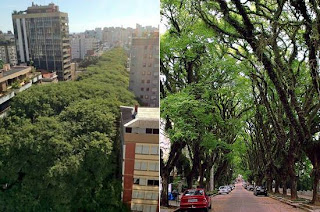The 3 most important questions to help you live smaller
It all begins with a simple question: Do I really need this? Once you start down that road, you'll want to keep going.
By yerdle (edited by me)
Tue, Feb 26 2013 at 6:07 PM
The majority of us are acquisitive people. We like things; we need things. We enjoy getting new purchases; we take pleasure in showing them off, using them, and sometimes even just looking at them. And this is all before the advertising backbone of consumer culture even comes into play, telling us what things we really want, even though we never thought we wanted them.
Even those of us, like myself, who try to be very conscious of the goods we purchase and their environmental and social impact, can be pretty acquisitive.
Left unchecked, it can result in impulse purchases filling closets and drawers, the contents left languishing seldom used, and, in extreme cases, rental of that public shrine to overconsumption, the self-storage unit.
So, what to do?
If you want to really start living small, here are three questions to ask before getting anything new and when evaluating those items you already have for potentially sharing.
1. Do I really need this?
Before bringing anything new into our lives, seriously contemplating the degree to which the item in question (or experience) will fill a role in enriching our lives in a meaningful, lasting way, ought to be the first question — one that gets asked often ...whether the internal debate lasts mere moments or several weeks.
Perhaps it's super basic, but if you are reading this, you likely have everything you need, at least on an existential level. So, the majority of your purchases fall into a category of wants rather than needs anyway.
2. If I've lived without this until now, can I continue to do so?
That's for something totally new, but if can also be asked of anything you already own and are contemplating parting with, phrased slightly differently: If I'm not using this item now, do I really need to keep it around?
In either case, this question is an important check on yourself. It's one where the answer may well surprise you.
Every situation and item is different, with the answer easily going either way, but just pausing and asking it is very important.
If you've answered in the affirmative, that yes indeed, I need this item and yessiree I can't live without it any longer, ask yourself the following question.
3. Is this item the most long-lasting (physically and stylistically) and greenest option available?
That's really a long version of asking yourself if the thing you're about to get is a just piece of disposable trendy gadgety tchotchke-ness — a horrifying amount of stuff out there is, after all.
This gets at the deeper basis of living small, which to my mind, is really not just about making the most out of small spaces, or minimalism in life, but also about living small on the planet and in our communities. It's about going through life like trying to walk across a puddle without making ripples.
Those things you do acquire ought to be beautiful, well-made, styled in a such a way that after years of ownership, they never look dated (even if your personal style may have changed). They ought to made of durable materials, as environmentally safe as possible; and ideally, produced by someone making a fair wage for doing so, in healthy working conditions.
Unfortunately, the facts of contemporary civilization are such that even for items that you do actually need, you may not be able to check off all those criteria in the previous paragraph. In which case, check off as many as you can and feel like you made a good decision in less-than-perfect circumstances.
Mat McDermott lives in New York City, where he writes about all things green and dharmic, as well as working with the Bhumi Project to reduce the environmental impact of Hindu temples. He wrote this post for sharing site yerdle.































